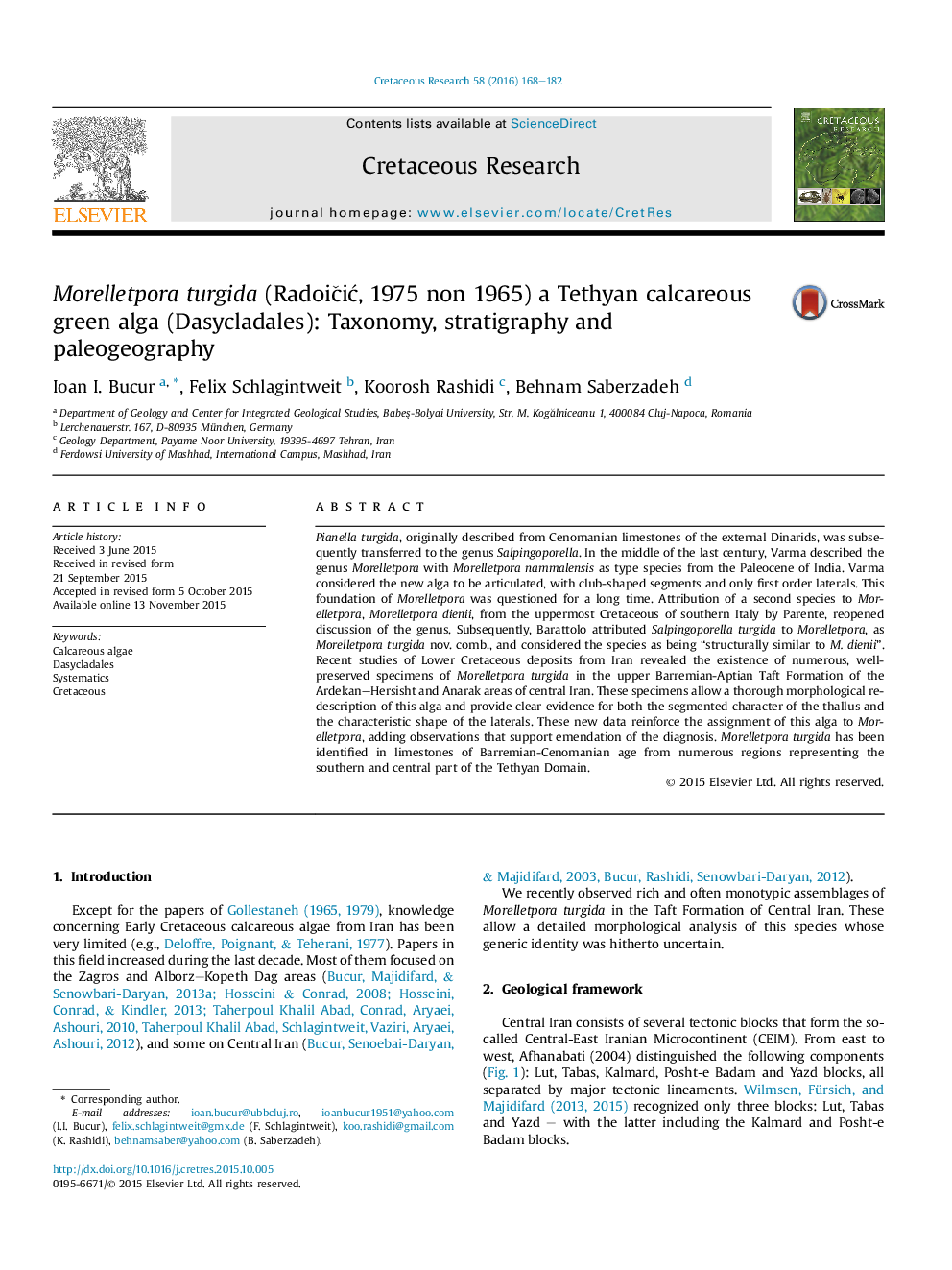| Article ID | Journal | Published Year | Pages | File Type |
|---|---|---|---|---|
| 6448214 | Cretaceous Research | 2016 | 15 Pages |
Abstract
Pianella turgida, originally described from Cenomanian limestones of the external Dinarids, was subsequently transferred to the genus Salpingoporella. In the middle of the last century, Varma described the genus Morelletpora with Morelletpora nammalensis as type species from the Paleocene of India. Varma considered the new alga to be articulated, with club-shaped segments and only first order laterals. This foundation of Morelletpora was questioned for a long time. Attribution of a second species to Morelletpora, Morelletpora dienii, from the uppermost Cretaceous of southern Italy by Parente, reopened discussion of the genus. Subsequently, Barattolo attributed Salpingoporella turgida to Morelletpora, as Morelletpora turgida nov. comb., and considered the species as being “structurally similar to M. dienii”. Recent studies of Lower Cretaceous deposits from Iran revealed the existence of numerous, well-preserved specimens of Morelletpora turgida in the upper Barremian-Aptian Taft Formation of the Ardekan-Hersisht and Anarak areas of central Iran. These specimens allow a thorough morphological re-description of this alga and provide clear evidence for both the segmented character of the thallus and the characteristic shape of the laterals. These new data reinforce the assignment of this alga to Morelletpora, adding observations that support emendation of the diagnosis. Morelletpora turgida has been identified in limestones of Barremian-Cenomanian age from numerous regions representing the southern and central part of the Tethyan Domain.
Related Topics
Physical Sciences and Engineering
Earth and Planetary Sciences
Palaeontology
Authors
Ioan I. Bucur, Felix Schlagintweit, Koorosh Rashidi, Behnam Saberzadeh,
